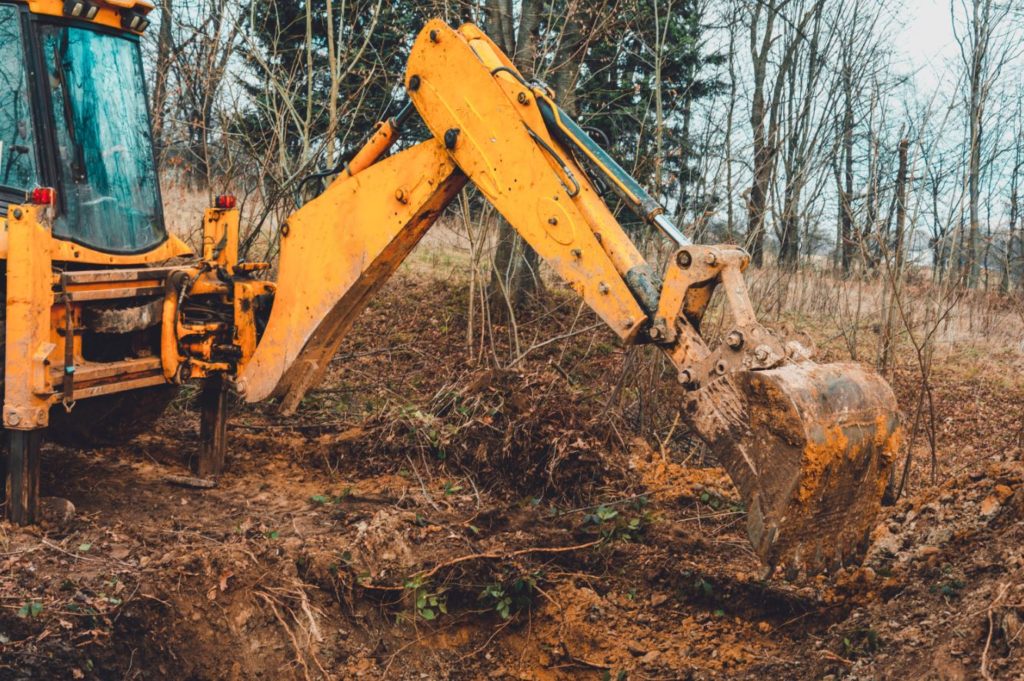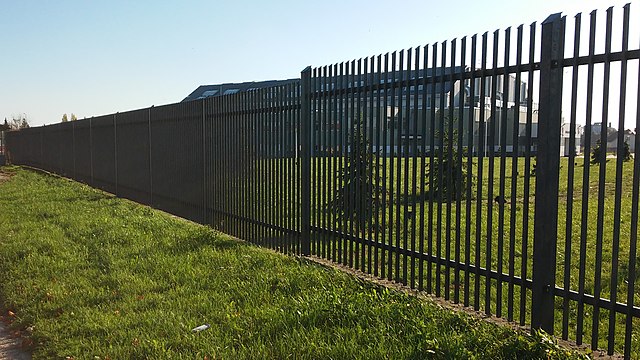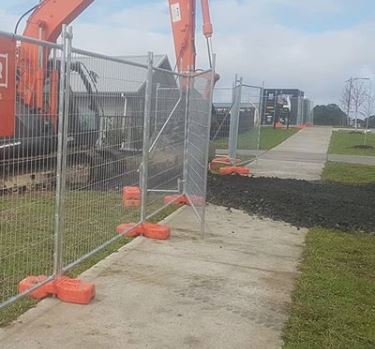
There is a lot of jargon in construction management, as there is in many other industries. If you haven’t worked in the construction industry before, there are several terms that you may not be familiar with and sitework, in particular, has its own construction lingo dictionary.
Grading, excavation, sediment management, utilities, curbs, and paving are all examples of sitework Terms. The following is a list of some of the most commonly used sitework construction terminologies and services.
Clearing
Clearing the space is the first step in the process of preparing a construction site. Clearing means what it sounds like, removing all vegetation. Your contractor will clear the construction site of all bushes, plants, and trees. Because enormous trees must be removed in a thickly wooded location, this takes longer and costs more. Not only must they cut down the trees, but they must also remove the stumps and roots.
Grubbing
Grubbing refers to the removal of the roots that remain in the soil after clearing. Grubbing removes logs, brush, and debris. Stumps are then ground or removed with a root rake or similar machine. This requires some heavy machinery such as a bulldozer, dump trucks, compactors, and scrapers. Once these land clearing basics are complete, the site is ready for drain installation and grading.
Grubbing is defined as removing and disposing of all unwanted vegetative matter from underground, such as stumps, roots, buried logs, and other debris. Removing hidden roots and limbs that were not removed during clearing with a root rake or blade. This is essential for clearing a jobsite.
Excavating
To remove surplus soil, contractors excavate the area. Excavation is the process of using tools, equipment, or explosives to move items like dirt, rock, or other materials. Earthwork, trenching, wall shafts, tunneling, and underground are all part of it. Exploration, environmental rehabilitation, mining, and construction are all important uses for excavation.
This could entail chopping down the side of a hill to create way for the new structure. Alternatively, you might dig a hole to house a new septic system. When this is being done, a huge excavator is usually present. Extra dirt is removed or used to fill in low locations on the site.
It’s also crucial to clear anything that emerged following the clearing process during excavation. This could include roots from long-dead trees. Alternatively, big underground rocks.
Leveling
It’s time to level the soil once it’s in the proper location. To move the dirt to the right spots, your contractor employs a backhoe or a skid loader. They’ll then use a construction leveling device to make sure the foundation is level across the board.
The creation of a graded slope is also an important aspect of leveling. This means that water flows away from the structure rather than toward it.
They fill in low locations with dirt during excavation to ensure that they are at a sufficient slope. During the leveling procedure, this dirt is smoothed out to ensure that the slope is not excessively steep or too shallow.
Stabilizing
When soil is moved throughout the excavation process, making it softer and less stable. And the less stable the soil is, the larger the soil particles are. Stabilizing the soil eliminates any air pockets or holes that may exist beneath the top layer of earth. The soil is compacted by the contractor using a heavy roller. It’s also possible to use a vibration compactor for this.
Soil stabilization can also be achieved by planting vegetation into the soil. The roots will hold the soil in place to reduce erosion and help with water infiltration rates to reduce flooding as well. Hyrdroseeding is a great way to stabilize large areas of soil by planting grass seed quickly. The seed is incorporated into a slurry that contains a mulching component to retain moisture and aid germination and fertilizer to encourage quick and reliable growth.
Backfilling
Backfilling is the process of returning dirt to a trench or foundation after it has been excavated and the associated work has been done. It is the process of putting dirt or stone behind an existing structure or wall. Backfilling demands expertise, heavy equipment, and a thorough understanding of the specifications, contract requirements, and soil conditions. Each type of soil has its own properties, necessitating the use of diverse construction approaches to achieve the best results.
When pouring and compacting backfill, backfill personnel must also take care to avoid impact loading any pipeline, shaft, structure, cabling, or other subterranean elements. Backfilling and compacting backfill can be done in a variety of ways. Special precautions must be taken while filling and compacting ditches for utility lines.
A Box Blade
A piece of equipment that pulls and levels dirt while being hauled behind a tractor to flatten the landscape. The blade or box can be tilted to dig deeper to collect soil or to level the dirt by skimming across the top. These drag-behind tractor implements include the box blade or box scraper. You can use these pieces of tractor equipment to add or remove soil and to level land, but you should already have a good grasp of tractor operation to use a box blade safely.
Cut-Fill/Borrow/Excess/Soil Balance
The total amount of dirt excavated, moved, put, and compacted on a job site. After the excavation (Cuts), the site may have too much dirt (Excess) or not enough dirt (Borrow). To prevent the costs of moving Excess off-site or buying Borrow material, an owner would like to have a Balanced site.
Density Test
A test used to determine how much soil, stone, or blacktop has been compacted. a typical test used in the construction industry, particularly in earthwork. Site soil backfilling is done layer by layer in the real world, with each layer compacted with compacting machinery. The layer thickness varies from one situation to the next, depending on the compaction energy of the machine.
This test is done with a density testing tool that uses ASTM T-99 or T-180 test techniques to measure compaction effort. In most cases, there is a 5% difference between the two procedures.
Sheepsfoot
A large piece of dirt compaction equipment. A sheepsfoot compactor is a piece of machinery that features elevated pegs or pads on the surface of a roller or drum. These compactors come in a variety of styles, including tow-behind and clamp-on models, as well as self-powered rollers. Clamp-on units can be used with backhoes, whereas tow-behind units are primarily built for use with tractors. A self-powered sheepsfoot compactor is sometimes used in road building to prepare the bare ground for gravel, concrete, or other material, and they are also used to compact garbage in landfills. These compactors’ pads or pegs are designed to compact the substrate material, whether it’s dirt, gravel, or waste, more tightly.
The Sheepsfoot is able to compact at a high value per square inch due to the angle of the projections on the roller.
Top Soil
A type of soil used in sitework to offer a good growing base for flora. This type of soil is usually dark in color and has a sandy loam texture. Filling up low spots in lawns, pathways, and patios with topsoil is a great idea. When compared to subsoil or clay, adding a few inches of topsoil provides lawn grass a greater chance. When planting trees and shrubs, adding dirt to the existing soil can help the plants grow better.
Topsoil, the top layer of the earth’s surface, is where plants get their water and nutrients. The darker the soil seems, the more organic matter it contains (like what you may see sold in bags or bulk as “black dirt”). This sort of soil is simple to dig and promotes strong plant development.
Grading And Site Preparation
A: Grading is the process of shaping and leveling the earth for a specific purpose. This might include creating a level surface for a construction project, draining or irrigating an area, or removing debris and sediment from an area. Site preparation is the process of getting an area ready for construction or another activity. This might include preparing the ground for grading, clearing away trees and brush, or installing drainage systems. Eastcoast Site Work is available if you are looking for site preparation contractors.
A water tap
A term used to describe the process of connecting to a water main to provide service to a home or building.
This list might go on and on, so please let us know if you think we missed any terminology or if you have any queries about any of them. Hopefully, you now have a better understanding of sitework and will not be as perplexed if these terms are employed in the future.
Additional Resources
- How to Estimate Sitework and Sitework Costs
- Why choose hydroseeding to establish a lawn instead of sod or dry grass seeding?
- Types of Soil Erosion and Mitigation Strategies
- Read more about What is Soil Stabilization in Road Construction here.
- How does Vegetation Help Stabilize Slopes and Prevent Erosion?
- The Basics of Construction Sitework and Best Practices



